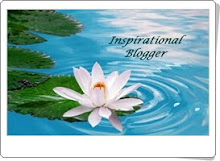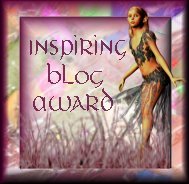For some time in this country I have been trying to get hold of some vat dyes, mainly Indigosol and Indanthren. I had briefly seen them in operation at art school by the students in the year ahead of us. They were fazed out by the time it became our turn. After years of trying to track them down only to find original suppliers had gone out of business or sold up to someone else who never restocked I gave up and bought from overseas! I purchased Indigosol from India and Indanthren from Denmark and I was not disappointed!!!! They are divine!!!.
For dyers who are familiar with Indigo dyeing you will love this process It is Indigo in a spectrum of colours!, and is very possible to achieve the same beautiful oxidation marks.
The process is fabulous for batik as they are are cold process are boil proof and will not run even in a mixed dyebath, in other words you can over dye yellow or red in a bath of blue with no contamination of the colours it is also possible to add white fabric to the dyebath as well and get a true blue! A perfect medium for workshops.
Because of the p[rocess where an acid and an alkali are added the resulting dyebath is ph neutral making it once mixed a safe medium to use with childre.
Getting a recipe was another task I found and old one on a defunct suppliers web site but found it arduous and it seemed to over use the chemicals. So after a lot of experimentation I have devised a simple recipe that you only need a plastic teaspoon to measure I still will give the gram weights so you may use digital scales if you wish, however accuracy is not imperative as long as you get the basic proportions right and this is really only in the interest of economy.
Vat dyes are basically an insoluble colour substance that creates a stable colour when used on fabric In order to make these substances soluble we need to reduce them and remove oxygen from the dyebath We use two chemicals to do this, sodium hydroxide (caustic soda) and sodium hydrosulphite (this is the bases of most colour remover products you can find in any supermarket, Rit and Dylon both make colour removers).
For the sake of most home dyers, we are going to use Rit colour remover because it is basically easier to get and a more stable product than sodium hydrosulphite. S..H. can be bought more inexpensively from chemical suppliers if you are going to do large quantities of dyeing however, there are restrictions on it postage , it cannot be airmailed and it has a relatively short shelf life (approximately 3 months after the initial opening of the container) Rit has a preservative in it so therefor will last much longer.
Let us begin:
Equipment
Dye bucket
wooden or plastic stirring spoon
disposable teaspoons (plastic picnic ones from Woolworths)
measuring jug (1 litre)
rubber gloves
Ingredients
3 litres of water (this will dye up to 300gm dry weight fabric approx three metres of homespun or medium weight cotton )
1 rounded teaspoon Rit colour remover, or Sodium Hydrosulphite (Hydros)
1 rounded teaspoon of vat dye colour (5gm)
1 rounded teaspoon of caustic soda (5 gm ) Caustic soda is available in a supermarket make sure you do not buy drain cleaner It has to be pure caustic soda)
Method
Measure 3 litres of water into a bucket
add Rit and caustic soda, stir well.
Add dye powder, stir gently and leave for 15 to 20 mins

add wet fabric, leave at least twenty minutes ( I like to leave mine as long as possible overnight is good)
If you wish an even dye colour, gently rotate the fabric periodically.
If you are like me and love the oxidising marks do not turn as often.
For even dyeing remove the fabric from the bucket rinse off with a running hose and hang to dry on the line.
For beautiful marks , remove from bucket and leave for at least one hour in a crumpled pile before rinsing and hanging on the line.
Here we are rinsing a tie dyed T shirt Now I have to tell you something DO NOT BE ALARMED if you find the liquid colour of your dye mix does NOT seem to be the colour you intended!!! For they are MAGIC dyes!!! You may mix up yellow and find your fabric goes PURPLE when you immerse it!!! That is RIGHT once your fabric is done and you begin to rinse it it will turn YELLOW before your eyes!! Is a wonderful thing for students to behold in a workshop!!
The above purple in the Tshirt was indeed yellow as you will see in the finished yellow and red item below!
Give these dyes a go you wont be sorry if you do!! They are for natural fibres cotton, rayon and silk!!!
They are for sale in A Little Bit Arty in my shop and as far as I know Rainbows End is Australia's only supplier!









.gif)




Alfa Chemistry employs more than 200 full time staff, of which approximate 80 are Ph.D. and M.S. chemists, specialized in synthetic chemistry, process optimization, and research. Vat Black 8
ReplyDelete